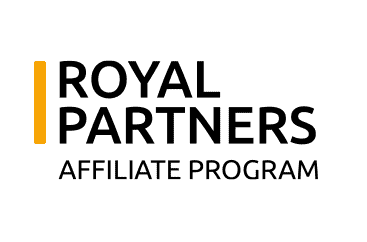Affiliate Marketing Projected to Hit $27.78 Billion by 2027: Why Growth is Still Accelerating

Affiliate marketing may have started as a niche corner of digital advertising, but it’s now on track to become a $27.78 billion industry by 2027, according to new figures released this week. The growth isn’t just steady — it’s accelerating.
What was once seen as a low-risk sideline for e-commerce brands has become a core performance channel, used by everyone from solo creators to global enterprise brands. And while the tools, platforms and players have changed, the appeal of affiliate remains the same: it’s measurable, scalable and cost-effective.
Here’s why affiliate marketing is still growing, what’s fuelling the momentum, and where the biggest opportunities lie over the next two years.
Why affiliate is still gaining ground
Affiliate’s rise isn’t just about the rise of online shopping. It’s about how businesses are changing the way they acquire customers.
As paid media costs have risen — with platforms like Meta and Google offering less reach for more money — advertisers are turning to affiliate because it shifts risk. You only pay when someone converts. That’s a much easier conversation to have with a CFO than traditional campaign spend.
At the same time, consumers are becoming more comfortable buying through recommendations — whether that’s a blogger’s product list, a TikTok creator’s link-in-bio, or a YouTube review. It’s more human, more targeted and, often, more trusted than banner ads.
Put simply: affiliate fits how people buy in 2025.
The influence of creators and platforms
One of the biggest reasons for affiliate’s continued growth is the explosion of creator-led commerce. TikTok, Instagram and YouTube have all introduced or expanded affiliate tools, making it easier than ever for influencers to earn commission from product mentions and shoppable content.
It’s not just big names driving the growth. Micro and nano-influencers — creators with under 50,000 followers – now account for a significant share of affiliate-driven sales. Their audiences are smaller, but they’re more engaged, and they often convert better than celebrity-style creators.
Platforms like LTK, ShopMy and Amazon Associates have lowered the barrier for entry, while publishers and comparison sites have improved their tracking and reporting to compete more directly with social-first creators.
This blend of influencer marketing and affiliate marketing is where much of the new growth is coming from.
Technology is driving smarter campaigns
Another reason for the rise in affiliate spend is improved tech. Tracking tools are more accurate. Dashboards are easier to use. Attribution models are smarter.
That means brands can see exactly which partners are driving value — and adjust in real time.
New affiliate platforms now include AI-powered product recommendations, automated fraud checks, and dynamic commission models. These changes help affiliate feel more aligned with the broader marketing stack. It’s no longer a bolt-on. It’s integrated.
Some networks are also enabling real-time data sharing between affiliates and advertisers, creating faster feedback loops that help both sides optimise quicker.
What this means for marketers
If you’re not already investing in affiliate, now’s the time to look again. And if you are — it might be time to step up.
Marketers should be thinking about:
- Diversifying affiliate partners to include influencers, content creators, and niche experts
- Using affiliate as a layer across existing paid media (e.g. working with content partners who also run retargeting)
- Tapping into affiliate data to identify which audiences and content types are driving conversions
- Exploring partnerships outside their core category, especially in areas like finance, wellness, SaaS and education where crossover audiences exist
Brands that approach affiliate strategically — rather than treating it as a separate or secondary channel — are likely to see the biggest returns.
What to watch next
As the industry grows, expect more consolidation. Larger networks will continue acquiring smaller ones, and technology providers will focus on automation and integrations.
Regulation is also a key area to watch. As affiliate continues to expand, governments may begin applying stricter standards around disclosures, tracking consent and influencer transparency.
For now though, the outlook is strong. More businesses are investing in affiliate, more creators are participating, and consumers are responding.
Affiliate marketing’s growth isn’t just continuing — it’s picking up speed.






